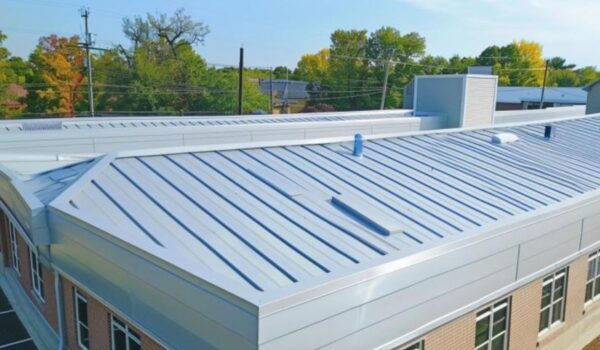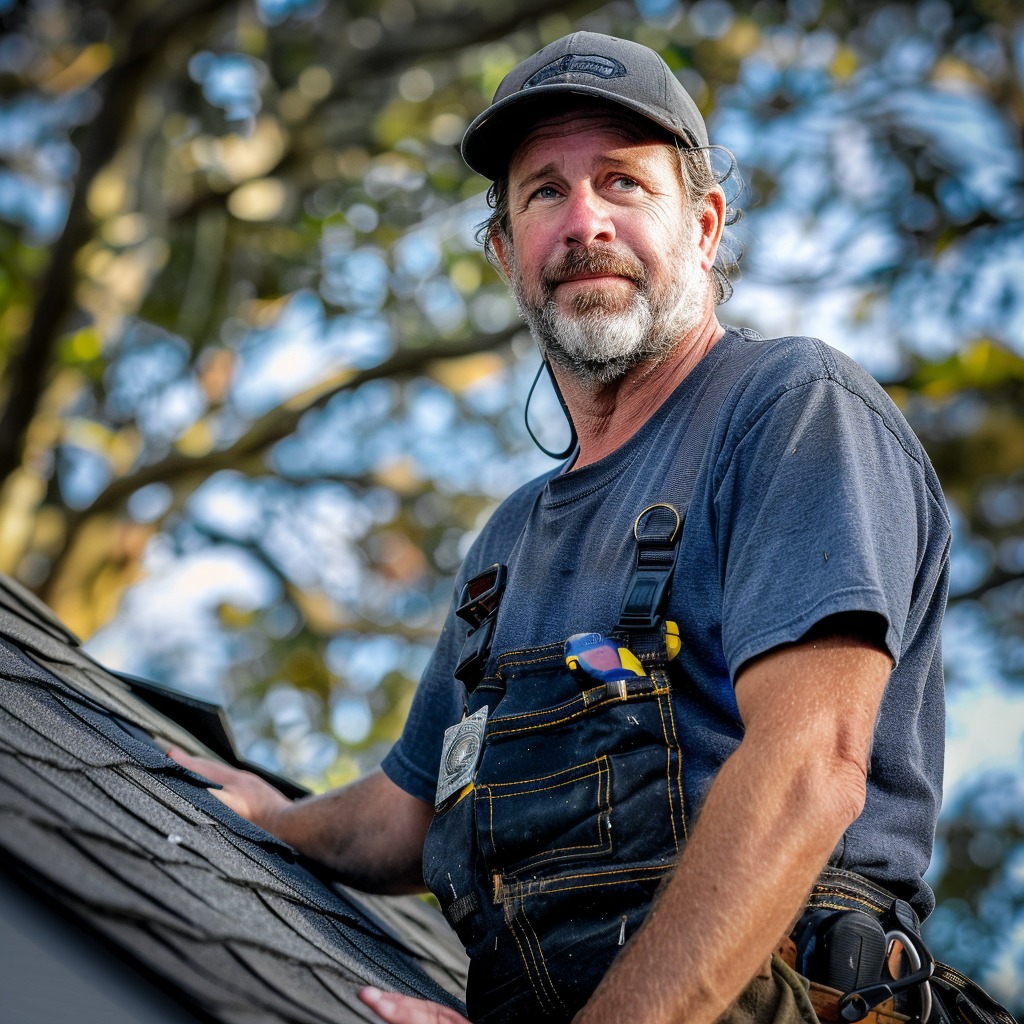
When it comes to commercial roofing, longevity and durability are crucial factors to consider. How long can a membrane roof last? Are there specific materials that offer a better lifespan than others? It’s time to debunk the myths and uncover the truth about membrane roof longevity.
Membrane roofs, such as EPDM, have gained popularity in the roofing industry due to their affordability and lightweight nature. But how long can you expect them to hold up? Let’s dive deeper into the lifespan expectations of membrane roofs and find out what factors can influence their longevity.
Key Takeaways:
- Rubber membrane roofs, like EPDM, have an average lifespan of up to 40 years.
- The quality of installation and maintenance play a crucial role in maximizing the lifespan of a membrane roof.
- Factors such as the chosen roofing material and the expertise of the roofing contractor can influence the lifespan of a flat roof.
- Regular roof inspections, proper drainage system maintenance, and environmental considerations can help extend the lifespan of a membrane roof.
- EPDM roofs are often recommended for their durability and affordability.
Factors Influencing Membrane Roof Lifespan
The lifespan of a flat roof is influenced by several factors, including the choice of roofing material and the quality of the installation. Different types of membrane roofs have varying lifespans, each with its own advantages and considerations.
EPDM Roof
EPDM roofs, made of ethylene propylene diene monomer, are known for their durability and longevity. These roofs typically last 25 to 30 years, making them a popular choice for commercial buildings. EPDM roofs are resistant to weathering, UV radiation, and thermal shock, ensuring their performance even in harsh conditions. Additionally, they require minimal maintenance, reducing long-term costs.
TPO Roof
TPO (thermoplastic olefin) roofs are another common choice for commercial buildings. Similar to EPDM, TPO roofs have an average lifespan of 25 to 30 years. They offer excellent resistance to ultraviolet radiation and are highly reflective, helping reduce energy costs. TPO roofs are also environmentally friendly, as they can be recycled at the end of their lifespan.
PVC Roof
PVC (polyvinyl chloride) roofs are known for their durability and longevity. They have a lifespan similar to EPDM and TPO roofs, lasting 25 to 30 years. PVC roofs provide excellent resistance to chemicals, punctures, and fire, making them a suitable choice for buildings with specific requirements. Their reflective properties also contribute to energy efficiency.
Metal Roof
Metal roofs, particularly standing seam roofs, are renowned for their exceptional lifespan. With proper installation, metal roofs can last up to 50 years or even longer. Metal roofs offer superior protection against severe weather conditions, such as hurricanes or heavy snowfall. They are also fire-resistant and require minimal maintenance. However, metal roofs can be more expensive compared to membrane roofs.
It’s important to note that the expertise of the roofing contractor and regular maintenance also play crucial roles in extending the lifespan of a flat roof. Proper installation techniques and the use of high-quality materials are essential for maximizing the durability and longevity of the roof. Additionally, regular inspections, prompt repairs, and preventive maintenance can identify and address any potential issues before they escalate, increasing the overall lifespan of the roof.
Having a clear understanding of the different factors that influence the lifespan of a membrane roof can help you make an informed decision when it comes to choosing the right roofing material for your building. Whether you opt for an EPDM, TPO, PVC, or metal roof, considering these factors and investing in proper installation and maintenance will ensure the longevity and performance of your flat roof.
Tips for Extending Membrane Roof Lifespan
Regular roof maintenance is crucial for extending the lifespan of a membrane roof. By following a few essential tips, you can protect your flat roof for years to come.
Maintain a Regular Inspection Schedule
Performing regular roof inspections is vital to identify any signs of damage or wear. Inspect the roof surface for cracks, punctures, or blistering, and check the seams for any signs of separation. Promptly address any issues you encounter to prevent further damage.
Keep the Drainage System Clear
A proper drainage system is essential for a flat roof’s health. Clogged drains can lead to water accumulation, which can cause structural damage and leaks. Regularly clean and inspect the drains to ensure they are free from debris. Adding guards to the drainage system can help prevent debris buildup and ensure proper water flow.
Invest in Waterproofing
Waterproofing is a highly effective way to protect your membrane roof from water damage. Applying a waterproof coating or membrane can provide an additional layer of protection against leaks and moisture infiltration, especially in areas with extreme weather conditions.
Consider Environmental Factors
Environmental considerations play a crucial role in preserving your flat roof’s lifespan. Trim back branches that hang over the roof to prevent potential damage from falling limbs. Remove any debris, such as leaves or sticks, that may accumulate and create a favorable environment for moisture retention and mold growth.
By incorporating these maintenance tips into your roof care routine, you can significantly extend the lifespan of your membrane roof and ensure its long-term durability.
Comparing Membrane Roofing Materials
When it comes to selecting roofing materials for flat roofs, it’s important to consider their lifespan and durability. Let’s compare the lifespan and other key factors of different membrane roofing materials.
EPDM Roof Lifespan
EPDM roofs, which are made of rubber, have an average lifespan of 25 to 30 years. This makes them a durable choice for flat roofs, providing long-lasting protection and peace of mind. With proper installation and regular maintenance, EPDM roofs can even surpass the 30-year mark in terms of longevity.
Modified Bitumen Roof Lifespan
On the other hand, modified bitumen roofs typically have a shorter lifespan of 12 to 20 years. While they offer good performance and are relatively affordable, they may require replacement sooner than EPDM roofs. It’s essential to consider the potential costs and inconvenience of more frequent roof replacement when opting for modified bitumen.
Rubber Roof Replacement
When it comes to replacing a flat roof, rubber roofs, specifically EPDM, can be a practical choice. With an average lifespan of 25 to 30 years, EPDM roofs offer a reasonable investment for the long term. The replacement process involves removing the old EPDM membrane and installing a new one, ensuring continued protection for your property.
Flat Roof Insurance Coverage
Insurance coverage for flat roofs is similar to pitched roofs. Most insurance policies cover damage caused by severe weather conditions, such as storms and hail. However, it’s essential to note that normal wear and tear is typically not covered. It’s always a good idea to review your insurance policy and understand the coverage options available to you.
To summarize, EPDM roofs have a lifespan of 25 to 30 years, making them a durable choice for flat roofs. Modified bitumen roofs have a shorter lifespan of 12 to 20 years, and rubber roof replacement involves removing the old EPDM membrane and installing a new one. When it comes to insurance coverage, it’s important to review your policy and understand what is and isn’t covered.
Conclusion
When it comes to flat roofs, understanding their lifespan is essential for homeowners and property managers. On average, flat roofs have a lifespan of around 20 years. However, this can vary depending on several factors such as the type of roofing material used, regular maintenance, and weather conditions.
To maximize the lifespan of a flat roof, it is crucial to hire a reputable roofing contractor, like American Roofing, that specializes in flat roof installation and maintenance. Investing in quality materials, such as EPDM roofs, can enhance the durability and affordability of the roof. EPDM roofs are a popular choice due to their longevity and cost-effectiveness.
Regular maintenance is key to extending the lifespan of a flat roof. Conducting routine inspections, addressing any signs of damage promptly, and maintaining a proper drainage system can help prevent potential issues. Additionally, being mindful of environmental factors, such as trimming back branches, can protect the roof from damage caused by falling debris.
When considering a flat roof replacement, it is important to understand that the cost can vary depending on factors such as the size of the roof, the type of materials chosen, and any additional features required. To get an accurate estimate, it is recommended to consult with a trusted roofing company, like American Roofing, that has expertise in flat roof installation and offers high-quality services to homeowners.
Source Links
- https://www.billraganroofing.com/blog/how-long-flat-roof-last
- https://www.amcoroof.com/blog/lifespan-of-a-flat-roof/
- https://coxroofing.com/rubber-membrane-life-expectancy/

Meet William Adams, a seasoned roofing expert with over 30 years of hands-on experience in the industry. Having worked tirelessly under the scorching sun and through the fiercest storms, William brings a wealth of knowledge and expertise to the table. Hailing from the heart of the USA, he’s witnessed the evolution of roofing practices firsthand, mastering every aspect along the way. Now retired from the field, William spends his days cherishing time with his loved ones while sharing his invaluable insights through this platform. With William at the helm, you can trust that every tip, advice, and recommendation provided is backed by years of real-world experience and unwavering dedication to quality craftsmanship. Join us as we journey through the world of roofing, guided by the wisdom and passion of a true industry veteran.
